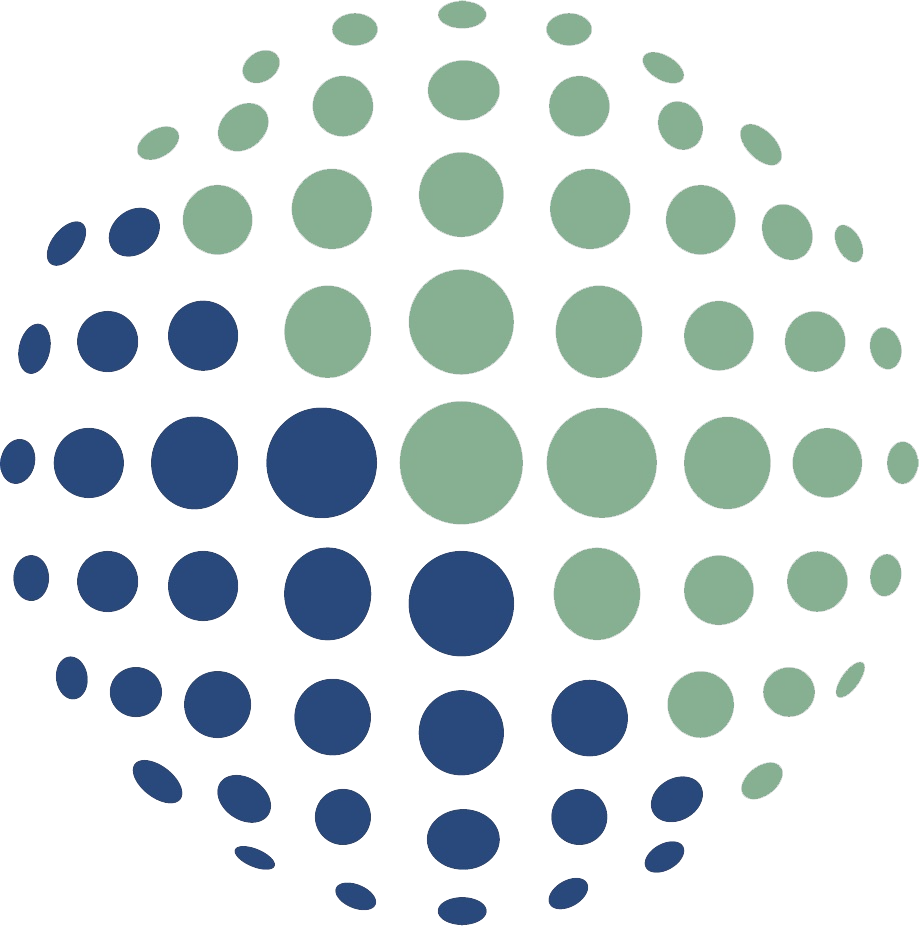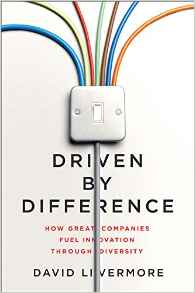At the end of January, our new book on culturally intelligent innovation will be available in bookstores everywhere. This month’s article is an excerpt from Part 1 in the book.
***
If you buy a silver Honda, you start seeing silver Hondas everywhere. It’s not that there are really any more silver Hondas on the road. But this simple reality demonstrates the power of the mind to more readily notice whatever you’ve been thinking about most. And the more you think about diversity and innovation, the better your climate for culturally intelligent innovation.
Your life has largely been fashioned by what you’ve paid attention to and what you haven’t. If you paid attention to other things, your reality and life would be very different. And a great deal of research supports that we become what we practice. If you develop patterns of being mean and nasty, you will get mean and nastier. If you practice being kind and caring, you will get kinder and more caring.[1] The same is true for an organization. The behaviors and respective priorities of a company or university shape what and how they operate. Our individual and organizational personalities become a composite of the things that grab our attention.
If you still aren’t convinced of the power of attention, how does your back feel right now? That information was available to you all the time you were reading the previous paragraphs but it’s only when it’s brought to your attention that you bring it up to the level of awareness. When you’re driving and you become engrossed in the news or a conversation on your phone, you become less aware of the scenery. You’ve turned down the sight dial in your brain so that you can allow the auditory inputs to capture your attention. And according to something psychologists call negative bias theory, you pay more attention to unpleasant feelings such as fear, anger, or the annoyance of a bad driver than to positive emotions because the negative ones are more powerful.[2] Negative bias theory has enormous implications for a culturally diverse team. Imagine a team meeting that includes a working lunch together. Because we’re socialized to eat in a certain way, watching someone eat in a different way can be jarring and strike us as rude or even barbaric. If you’ve learned that good manners includes closing your mouth when you eat or breaking off small pieces of a bread roll rather than picking up the whole thing, seeing someone deviate from those norms immediately surfaces on our attention. But when people eat like we expect them to eat, their behavior largely goes unnoticed. You’re unlikely to notice when someone eats “politely” but you’ll most definitely notice when they don’t. Good manners, respect, and appropriate professional behavior are culturally bound.
Beware of too quickly assuming someone isn’t acting professional or demonstrating confidence. Similarly, we’re less likely to notice a colleague’s cultural differences when things are going well. He’s just “John” or “Jose” when you’re working without any conflict. But when something negative occurs, the first impulse is to view John or Jose in light of his culture. Suddenly the thinking becomes: You just can’t trust people from that culture because they end up letting you down. Giving undue attention to negative feelings shrinks your world and your breadth of perspective. Focus on the positive and you’ll expand your view. This is the power of attention.[3]
How to Pay Attention to Culturally Intelligent Innovation
Your mind is your most powerful asset for innovation. Spend time thinking about innovation and it will help foster creative breakthroughs for diverse users. Maintaining and developing a climate of culturally intelligent innovation among a multicultural team requires a deliberate, ongoing effort. Our attention and therefore our companies are easily distracted. But there are a few practices that can help.
Map Your Differences
Start by paying attention to your differences rather than tolerating or overlooking them. Identify each team member’s differences. Create a list with names and the most relevant differences they bring to the team. Start with the two kinds of diversity that are most relevant for how you work together: visible diversity and underrepresented groups. Consider other differences that might also be relevant such as personality styles, skills, industries previously worked in etc.
Many of the organizations we work with use each individual’s cultural value scores from the CQ Assessment reports to create a team list that everyone posts by their desks. That gives each person a visible reminder of the different values and orientations each team member brings to the team.
Prime for Innovation
Priming is the process of presenting a particular stimulus to make us feel and act in a certain way, such as a supermarket that puts “freshly cut” flowers at the entrance of the store so you think of freshness from the moment you enter. To what degree do people across your organization share a vision for innovation and looking ahead? And to what degree is diversity consciously linked to innovation as a resource for new ideas?
The most important way to prime for culturally intelligent innovation is for the leadership to surround themselves with a diversity of perspectives, utilizing that breadth to drive their own innovative approaches. Innovation needs to be built into every person’s role and across all the systems and processes for product development and implementation. Images, signs, town hall meetings, and written messaging need to be used to keep everyone’s attention on the customers of tomorrow.
Become conscious of blind spots
Tap into the power of attention by becoming more aware of your subconscious. Take one of the tests at Project Implicit and consider which groups of people you find most difficult to trust. How might that difficultly connect to a deeply rooted bias? And how might it be closing you off from innovative breakthroughs? By becoming more aware of unconscious bias, you begin to retrain the mind to open yourself and others up to learning from the perspectives of others whom you may otherwise tune out.
Train yourself (and others) to think differently
The brain is an amazing organ. And we can train it to be consciously thinking about innovation through things as simple as taking a different route to work or shifting around our morning routine. One of the best ways to consciously innovate is to disrupt your habits at least once a day. Make a habit of forcing yourself out of autopilot. Change up your morning routine. Drive to work a different way. Work from a different space. Don’t always run your meetings the same way or in the same place. When your team comes up with a solution, stop and ask each other whether this is the best option or whether a third alternative is worth exploring.
Beware your gut
The gut can be a shockingly reliable mechanism for decision-making because our subconscious has been programmed over time. When assessing a familiar situation, the gut often leads to a better result than spending hours reviewing pros and cons. But the gut is subject to enormous error when the cultural context changes and as a result innovative solutions are often missed. Consult with others and consciously suspend trusting your gut. Questions your assumptions and proactively seek out third-way solutions.
Conclusion
Paying attention to culturally intelligent innovation is not enough. You also need to develop a process for effectively leveraging the diversity on your team to come up with more innovation solutions. But there’s tremendous power in what we pay attention to and what we don’t. You can’t force yourself or anyone else to have eureka moments. But the degree to which you consciously utilize the diversity around you and explore creative solutions is directly tied to the probability of producing innovative results.
***
Portions of this article excerpted from Chapter 2 of Driven By Difference: How Global Companies Fuel Innovation Through Diversity. Download a sample chapter and pre-order your copy now.
***
Advance Praise:
“This book provides a compelling and refreshingly practical account of how and when to use ‘CQ’ to drive higher levels of innovation performance.”
— Paul Polman, CEO Unilever
“Livermore makes a strong, science-based case for why diversity and cultural intelligence matter more than you think. Rooted in research and amplified with powerful case studies and examples, this book is an essential read for those hoping to leverage an increasingly diverse workforce to drive innovation.”
— Daniel H. Pink, author of TO SELL IS HUMAN and DRIVE
“This book is a must read for any leader wishing to develop more culturally innovative teams and organizations. Dr. Livermore’s in-depth research provides the missing link to diversity efforts that are not being fully leveraged.”
— Andrea Kelton-Harris, Sr. Diversity Leader, Harvard University
“Filled with numerous examples and straight talk on how to drive culturally intelligent innovation, Driven by Difference should be mandatory reading for your entire team. ”
— David Butler, Vice President of Innovation, Coca-Cola
“Driven by Difference presents an intriguing, compelling, and thought-provoking approach to unleashing the creative and innovative potential of diverse teams.”
—Anthony Mayo, Director of Leadership Initiative, Harvard Business School
“For more than two decades, there has been a discussion of the link between diversity and innovation. This book succeeds at advancing our knowledge of this link by providing the frameworks and practices that guide us to think and act culturally intelligent as we leverage diversity to innovate.”
–Lynn Wooten, PhD, Associate Dean, Ross School of Business, University of Michigan
“Through concrete research and real life examples from across the globe, David Livermore’s new book shows us how diversity can be consciously linked to innovation.”
—Anindita Banerjee, PhD, Renaissance Strategic Consultants, India
[1] Susan Smalley & Diana Winston, Fully Present: The Science, Art, and Practice of Mindfulness, (Philadelphia: Lifelong Books), 2010, 134.
[2] John F. Pratto, Automatic vigilance: The attention grabbing of negative, social information, Journal of Personality and Social Psychology 61 (1991): 380-391.
[3] Barbara Fredrickson, Positivity: Groundbreaking Research Reveals How to Embrace the Hidden Strength of Positive Emotions, Overcome Negativity, and Thrive, New York: Crown, 2009.


Comments are closed